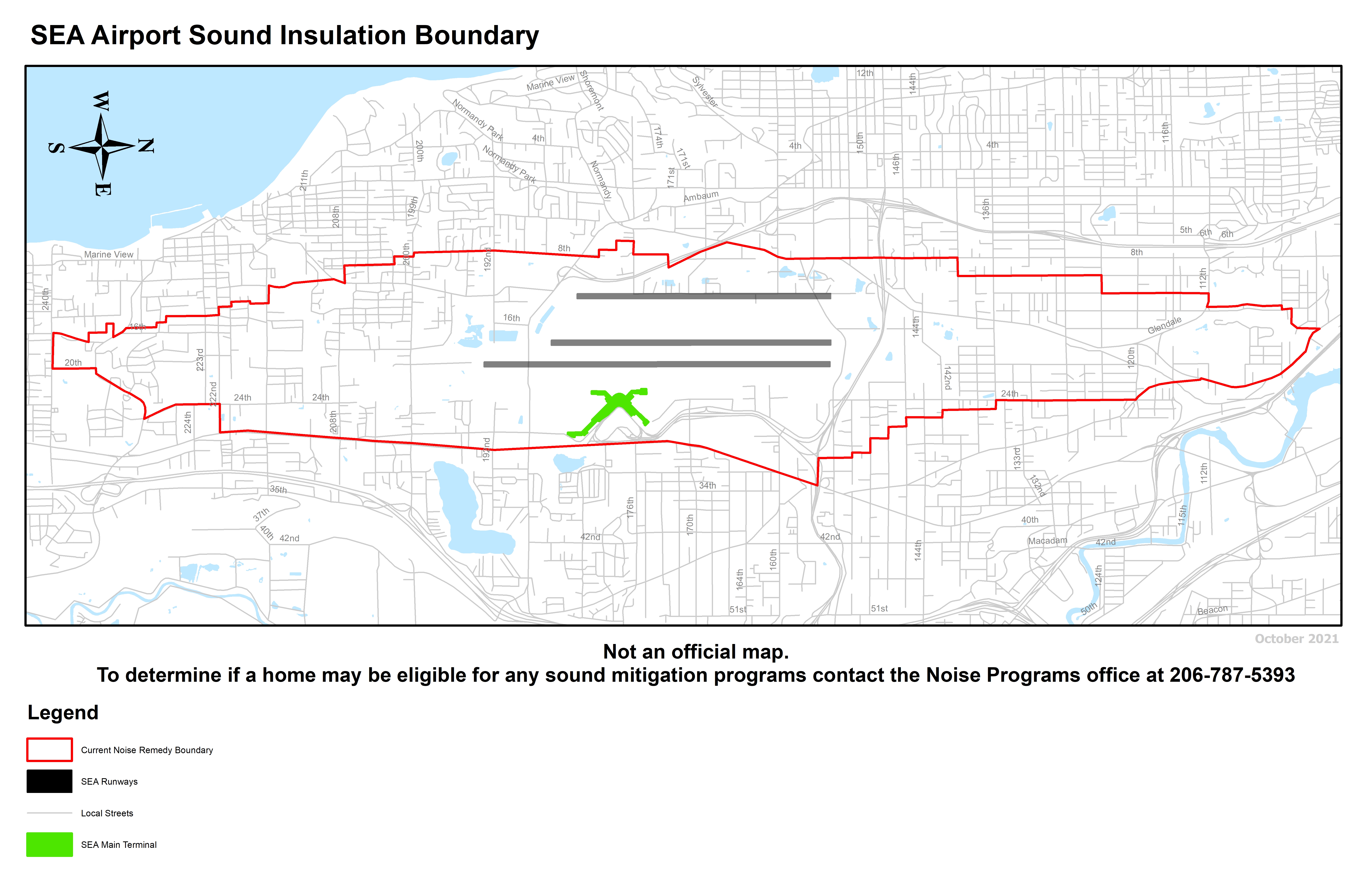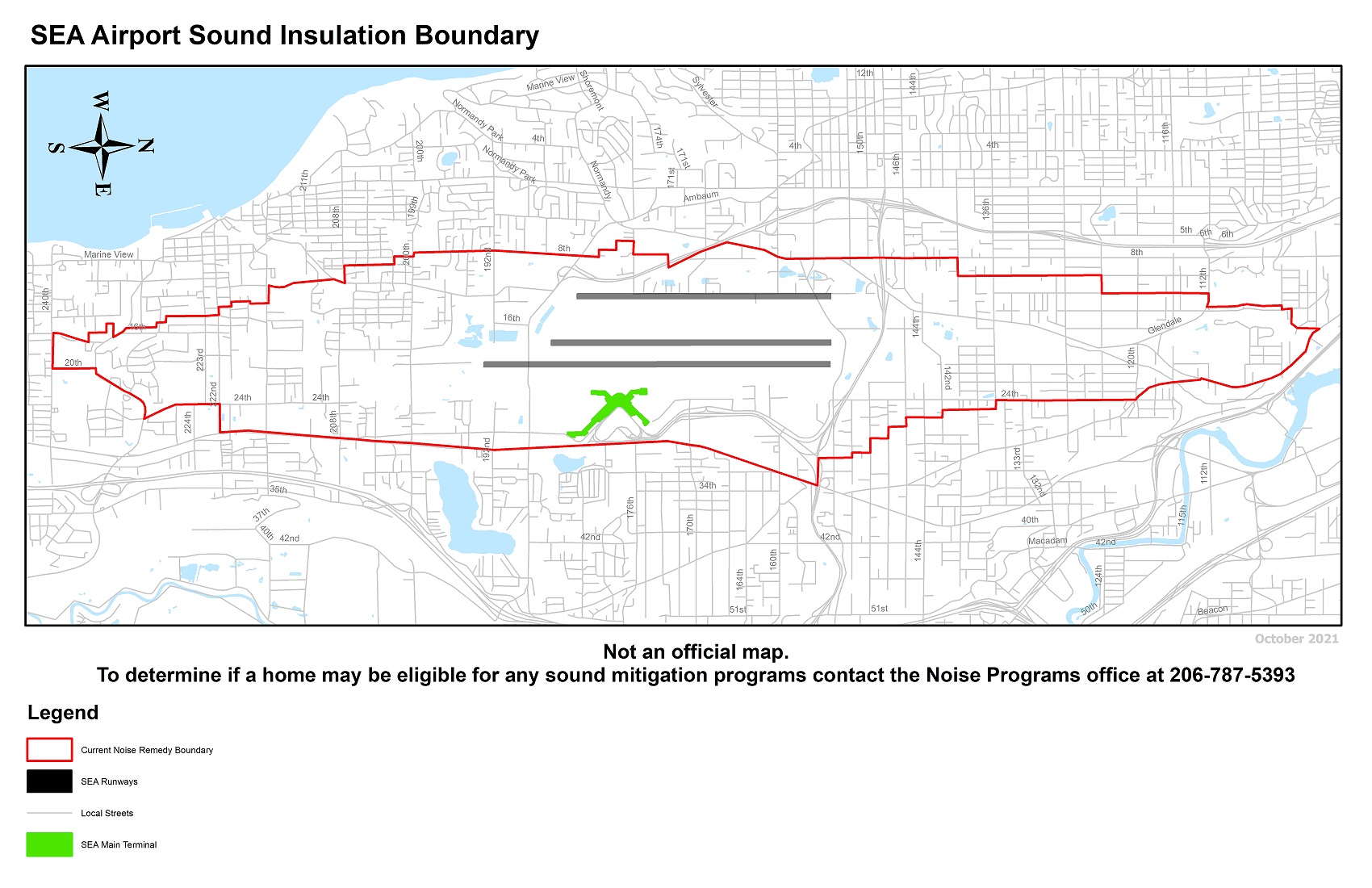
Thank you for your interest in the Port of Seattle’s Sound Insulation Program. This Program is designed to reduce the impact of aircraft noise within your home. Your participation in the Program is entirely voluntary. The Port of Seattle (Port) wants owners to have the information they need to make an informed decision about participating in the Program. Participants in the Program are required to sign legal documents including an avigation easement granted to the Port.
One of the goals of the Program is to achieve a noticeable reduction in the amount of noise that enters your residence. While no residence can be completely “sound-proofed,” the quality of life in your residence may be improved by reducing how much sound enters your living areas.
These sound insulation improvements can also provide increased energy savings, and in some cases reduced maintenance costs on the new window and door products. Homeowners have also reported to the Port that new doors and windows have improved the appearance of their homes.
Information Request Form
Translation services are available.
*To use the "Search Answers" feature, type in a word in the box and then click the "Apply" button to the right.


